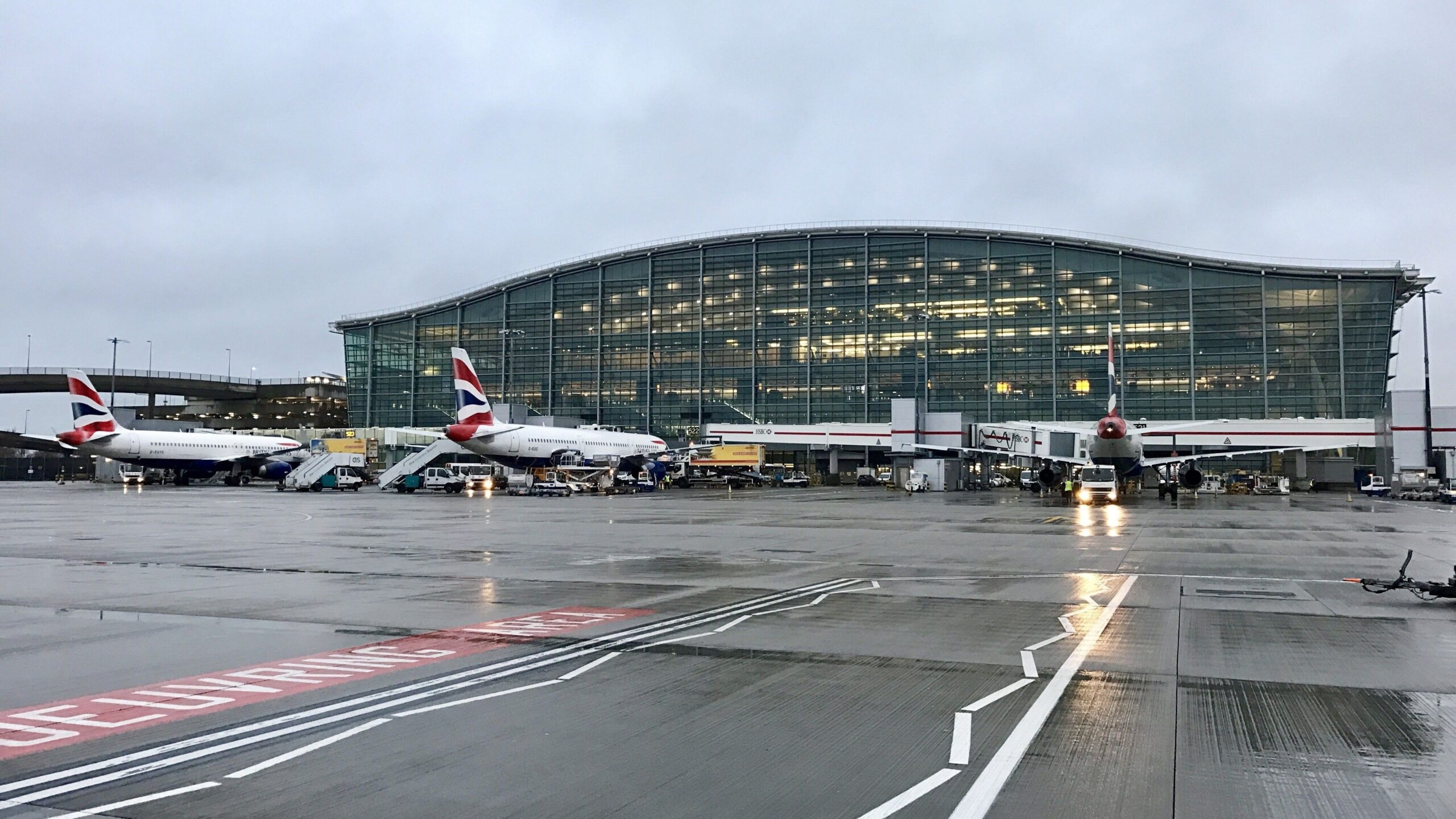Summary
- Terminal 5’s launch faced issues due to equipment malfunctions and inadequate staff training.
- Issues forced hundreds of flight cancelations and a PR disaster for Heathrow and British Airways.
- BA had to delay long-haul flights transfer due to Terminal 5’s teething problems.
Over the years, the UK’s London Heathrow Airport (LHR) has developed from a basic postwar facility to a multi-terminal intercontinental hub among the busiest airports in Europe and the world. One of the defining moments in the airport’s recent history was the opening of its Terminal 5, which took place back in 2008.
The new terminal was touted as a state-of-the-art addition to the UK’s busiest airport. Led by renowned architect Richard Rogers, some of its main draws included an advanced baggage handling system and sustainability features. However, its early operations were marred by various teething problems.
A brief history of Terminal 5’s development
Heathrow’s story has always been one of expansion. Discussions surrounding the possibility of constructing a fifth terminal at the UK’s largest air hub date back as far back as the 1980s. However, it took a while for such a proposal to be formally announced, as the also-expanding London Stansted (STN) was considered a way of adding extra capacity to the UK’s busy and growing aviation industry.
Photo: Gordon Bell | Shutterstock
However, May 1992 eventually saw a formal announcement of the proposal. This was followed by a planning application for the project, which then-owners BAA submitted in February 1993. BAA has since been renamed Heathrow Airport Holdings, and the group is also the parent company for the Heathrow Express. The project still had a long way to go following the submission of BAA’s application.
According to the UK’s Department For Transport, the proposed new terminal ended up being the subject of the longest public inquiry in UK history, with the process running from May 1995 to March 1999. Planning permission was eventually granted almost three years after the conclusion of this inquiry, in November 2001.
Construction work on the new terminal began the following September. However, the parties involved did have the small matter of a stalemate regarding pay and conditions packages for those building the facility to deal with.
According to Building.co.uk, this led to calls for an on-site union in order to protect the workers’ rights. Nonetheless, the new terminal was finally inaugurated in March 2008. Some of its key features included:
- A curved roof design maximizing natural light
- Advanced, high-capacity baggage handling system
- Automated check-in kiosks and biometric security gates
- Energy-efficient, sustainable materials and power solutions
Less than an ideal start
Just under two weeks after its inauguration, the brand-new Terminal 5 at London Heathrow Airport officially opened for business on March 27th, 2008. Unfortunately, despite the UK’s largest free-standing structure having cost a whopping £4.2 billion to develop and construct (£7 billion or $8.9 billion today) and having been subjected to six months of rigorous trials, its early operations were far from perfect – not only was some of the equipment not working correctly, but many staff were inadequately trained to handle the new systems, leading to a PR disaster for the airport.

Related
Post-Pandemic Shift: London Heathrow Airport Reports 1st Profit Since 2019
The airport has come a long way from its heavy pandemic-era losses.
Photo: cycreation | Shutterstock
Indeed, as early as the terminal’s opening day of scheduled flights, the BBC noted that a processing backlog had forced UK flag carrier and oneworld founding member British Airways to suspend the checking-in of hold baggage. This resulted in the cancelation of more than 30 flights, with inbound passengers also affected by the unexpected disruption. Specifically, they were faced with four-hour reclaim waits.
By the end of the month, the number of lost bags at Heathrow Terminal 5 had shot up to some 28,000. The BBC reported at the time that the lengthy process of manually rescreening all bags would take up to a week to return all bags to their owners after placing them in temporary storage.
Heathrow and BA responded by boosting staffing levels and enhancing training, slowly getting operations in the terminal back on track. IT issues played a big part in the meltdown, with various glitches and technical issues gradually fixed. After canceling hundreds more flights, British Airways was eventually able to start operating its full short-haul schedule in early April.
Delayed long-haul transfer
However, the British carrier had to postpone transferring its long-haul flights while the new terminal overcame its teething problems. As the BBC noted, this was meant to take place at the end of April 2008 but was pushed back to June. This, in turn, forced carriers such as Continental and Delta to postpone their moves into Terminal 4, where British Airways’ long-haul flights had previously departed from.
Photo: EQRoy | Shutterstock
Later that year, in mid-May 2008, the reasons for the early issues became evident. According to Computer Weekly, then British Airways CEO Willie Walsh said that IT issues had been one factor, but the airline could have coped with these problems alone. However, other aspects, such as parking-related matters, inadequate training, and broken lifts, compounded the disruption.

Related
5 Defining Events From London Heathrow Airport’s History
Heathrow has grown to one of the busiest airports in the world.
What do you make of Heathrow Terminal 5’s difficult start? Were you affected by its early disruption? Let us know your thoughts and experiences in the comments.





